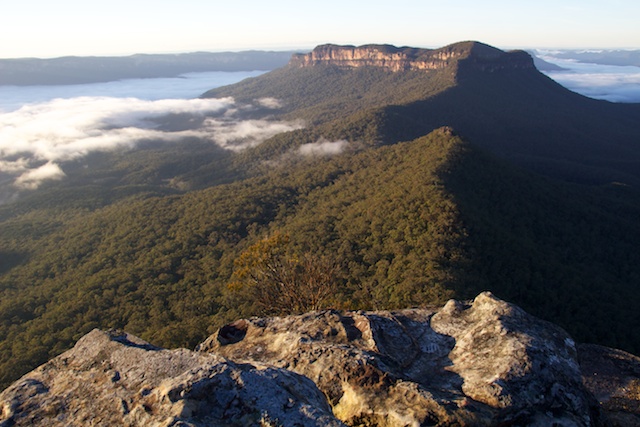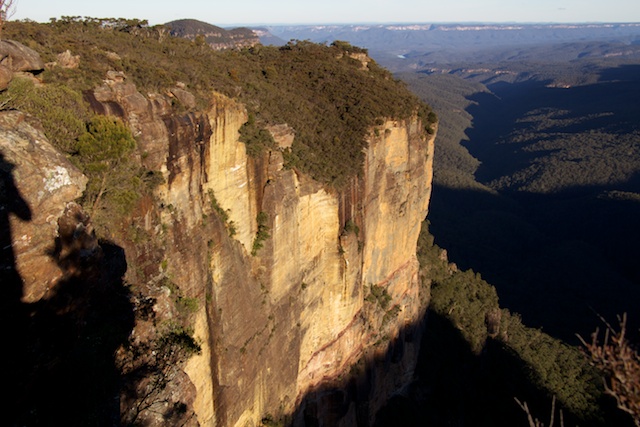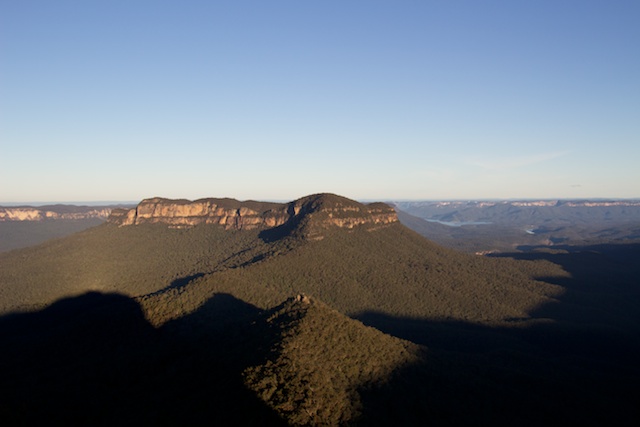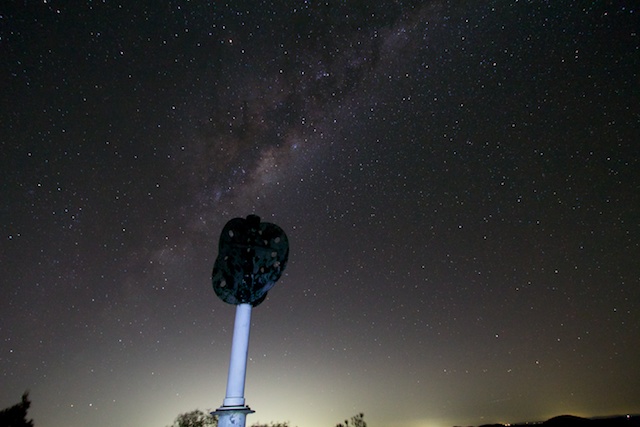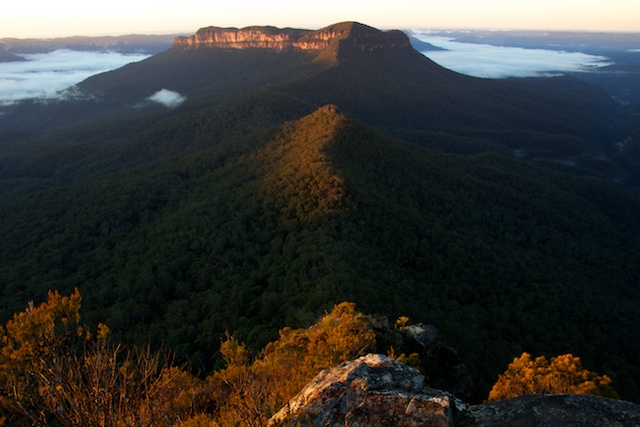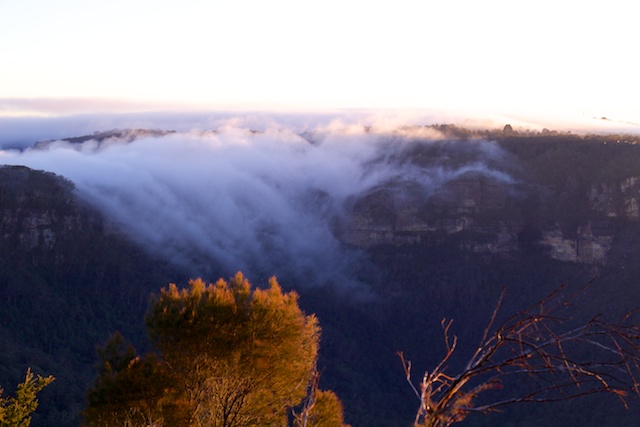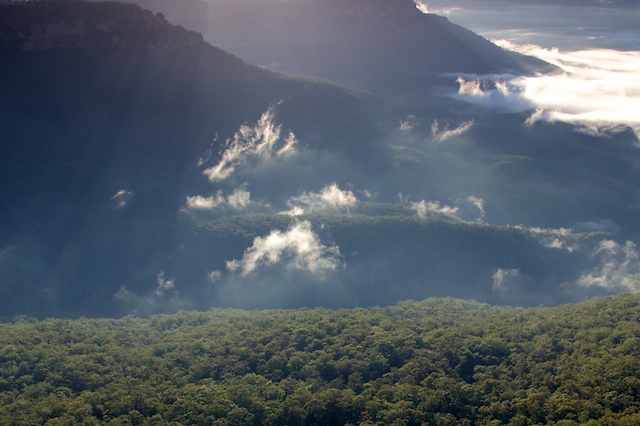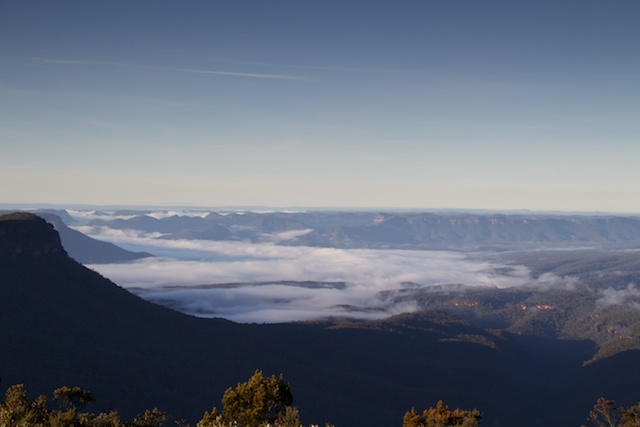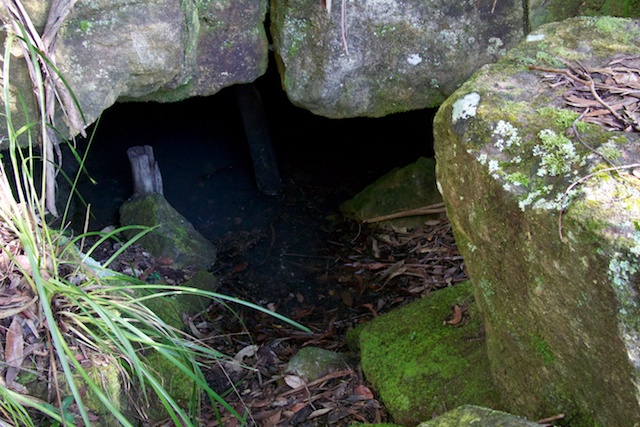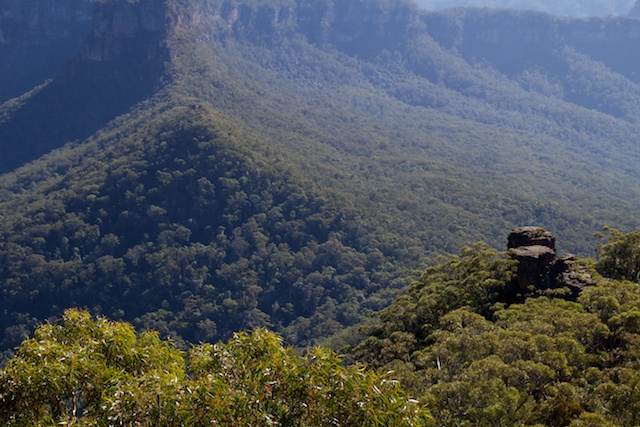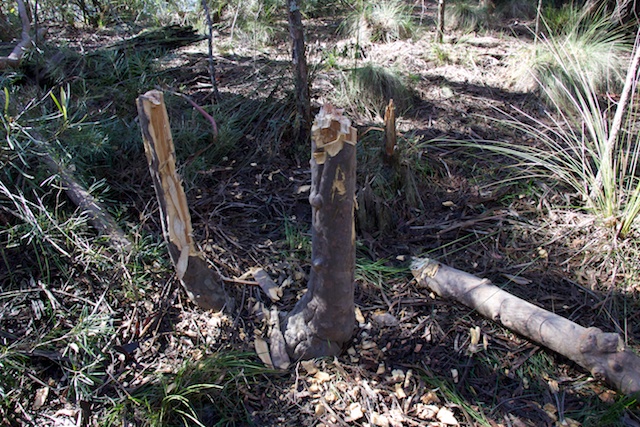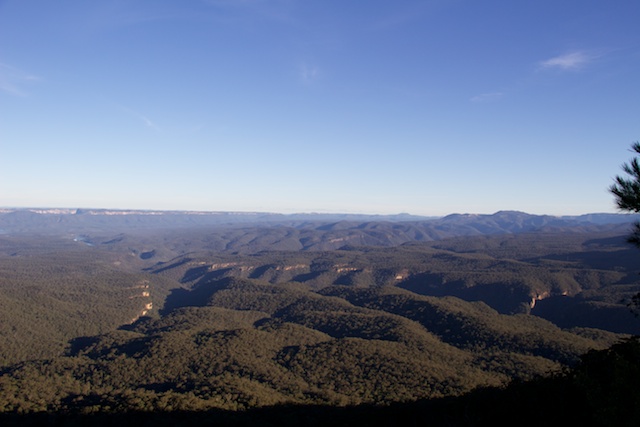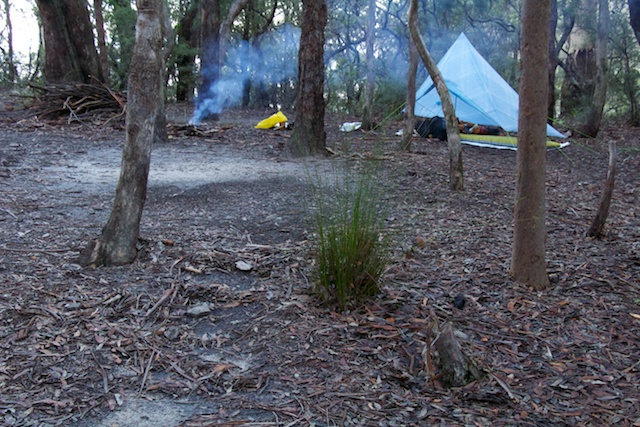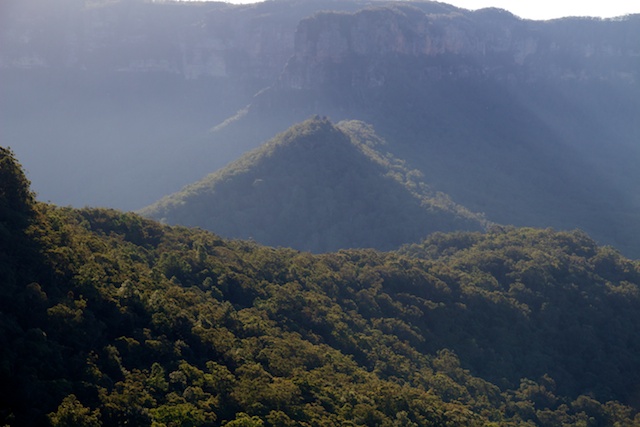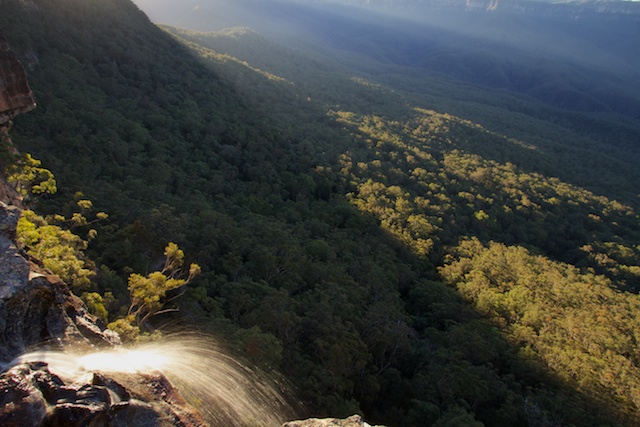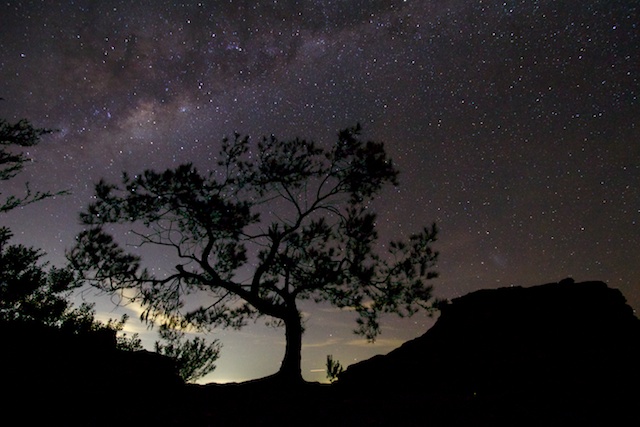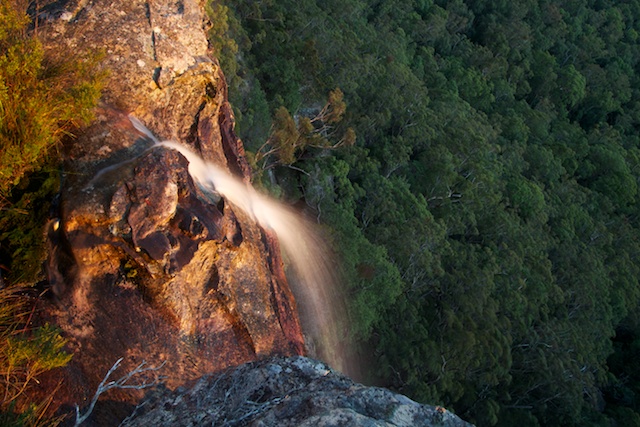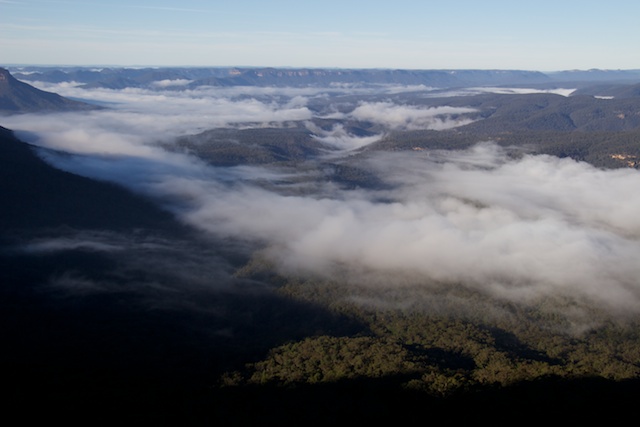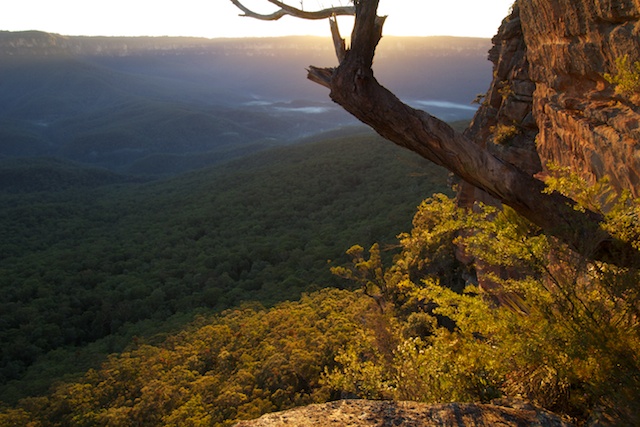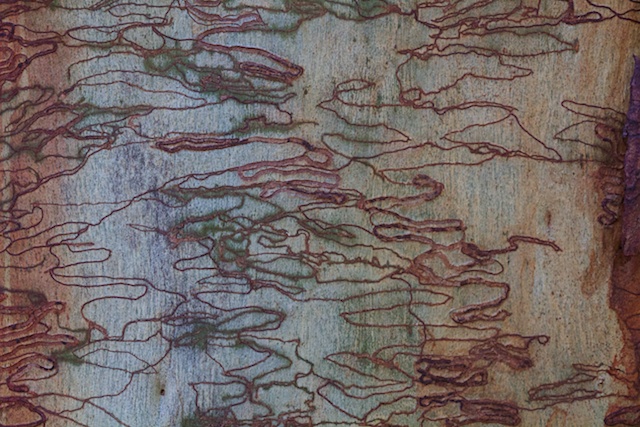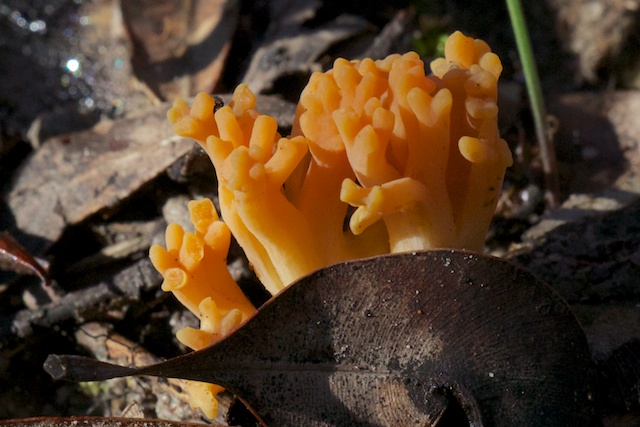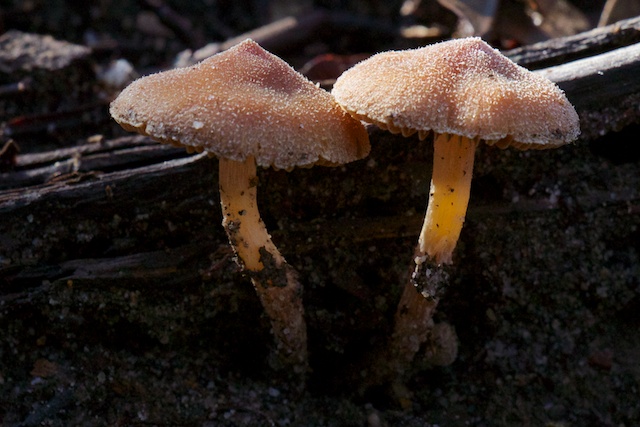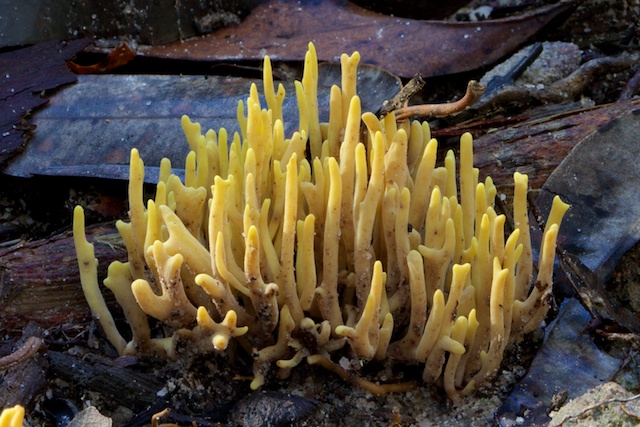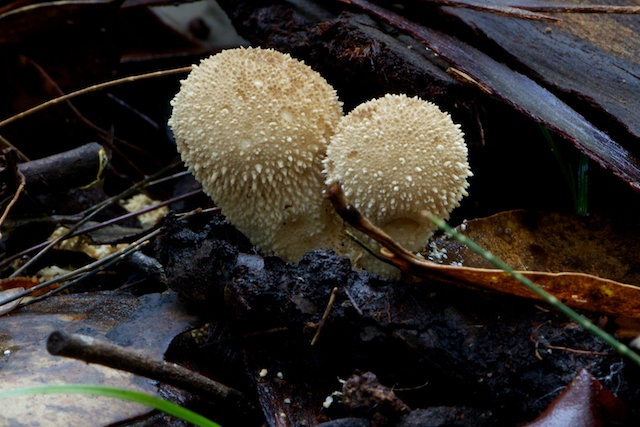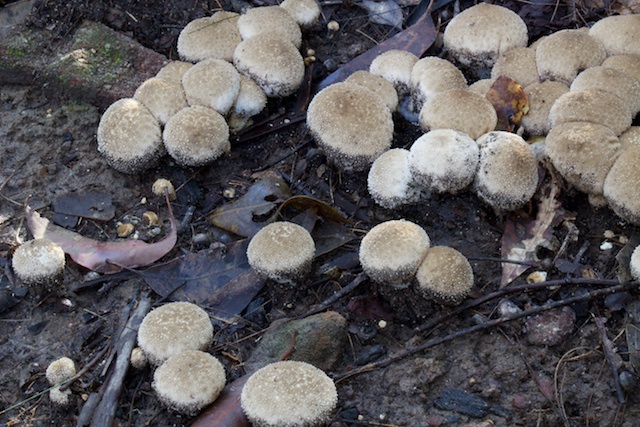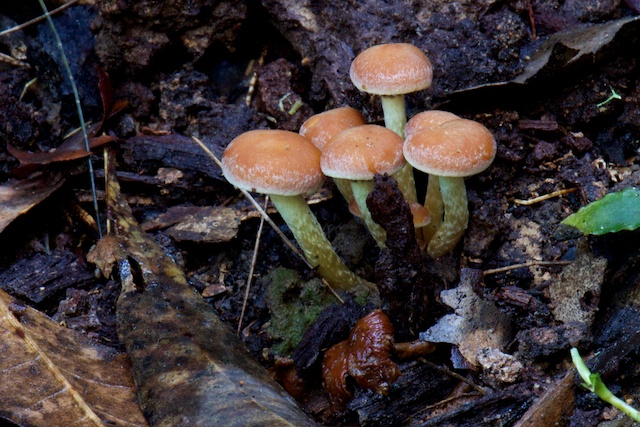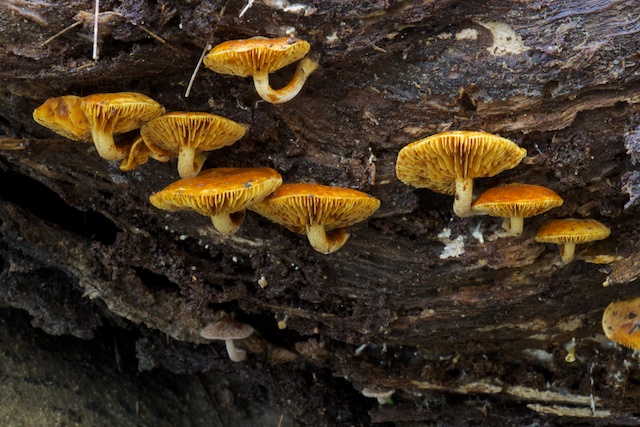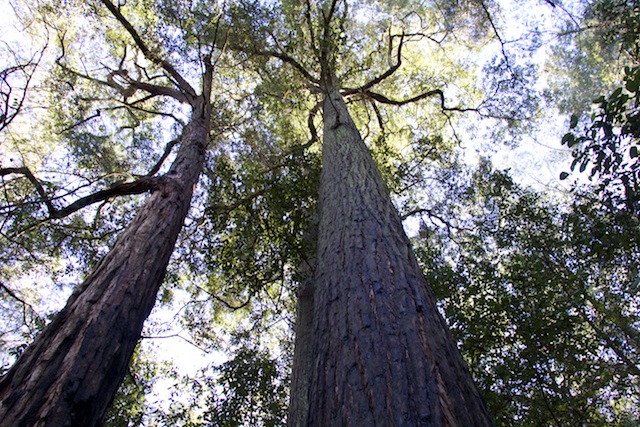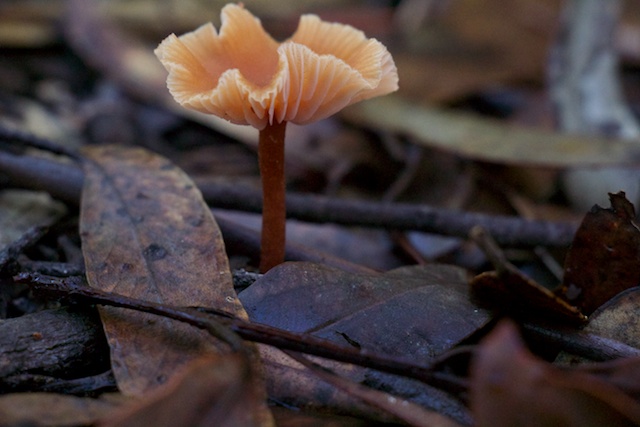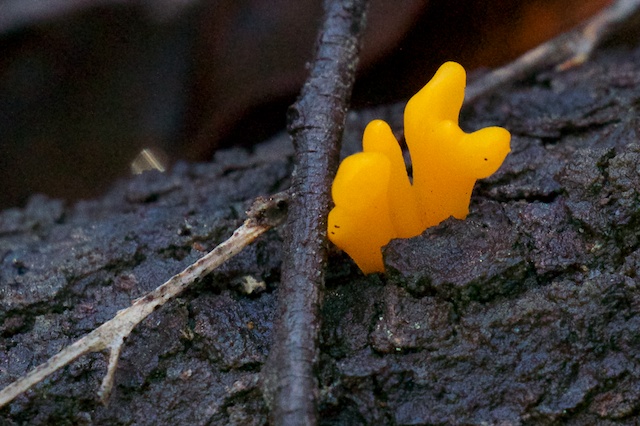This was a two and half day walk. I arrived at Katoomba at 2pm and walked out to Narrow Neck. It took about an hour to walk out to the barrier and then about another 40 minutes to walk out to Castle Head.
The turn off track leaves the Narrow Neck fire trail about 1km from the barrier. It is the third turn off to the left. The first is a track marked by a duck (cairn) that goes to a nearby lookout. The second turn-off is an old road that goes a short way up a hill and is blocked by metal posts. The third turn off, the one to Castle Head, the one to take, is marked by a couple of wooden posts.
There is very limited camping available at the Head. About ten minutes before you reach the head – there are a couple of spots you can camp and a few fire places. I used a spot mush closer to the trig, in a thicket of trees. A small space but quite sheltered. And it is close to the views.
The sunset was OK, but not too atmospheric. Dawn was better. I had been hoping for some valley mist. And it had been a still night. There was some mist in the valley but not too much. There was also some mist in the Katoomba area and some tumbling from Megalong Valley over the low point of the first neck of Narrow Neck as a “mist waterfall”. I think Lake Burragorang helps generate valley mist in the Jamison Valley, but it also seems to be better just after rain and it needs a still night. The webcam at Scenic World is useful for seeing if their is mist. On the morning, before I had walked out to Castle Head, there had been a very good mist, much better than I had this morning.
After breakfast, I walked back to the Narrow Neck fire trail, back to the barrier and then down the hill to the Golden Stairs track. After the steep descent to Federal Pass, it is about 30 minutes walk along the old railway formation to the Ruined Castle turnoff. Near this track junction is a lot of evidence of old shale mines and mullock heaps. A few minutes further along the main track, where the railway formation terminates, there is an old mine adit that you can enter. This is very close to the track. It used to be a reliable source of fresh drinking water, but for years, it had been dry. It is now full of water again.
Then the track drops and sidles around the Ruined Castle and crosses the saddle before climbing up to Mt Solitary. The climb up, is very nice. Some easy scrambling and great views that get better the higher you climb.
What was very disturbing, was when I got on top of Mt Solitary there were some recently cut down trees. A group of young guys had been camping nearby, and were now packing up. Some of them had swags and army fatigues. Were they responsible? It looks like it. I later met another party of bushwalkers in Chanamans Gully. I had met one of them before on Donkey Mountain and we had a chat. We talked about the chopped down trees and, they had asked the young guys if they had chopped them down. One admitted he had done it and they had an axe with them. Mt Solitary deserves a lot more respect than this!
On this trip, I camped at the top of Chinamans Gully. This is very close to Melvilles Lookout, which provides great views to the south – including Kings Tableland, Lake Burragorang, The Blue Breaks, Mt Colong, Mt Cloudmaker and Kanangra Walls. By walking down Chinamans Gully, it is easy to get to another lookout that provides great views to the north of Jamison Valley
There are plenty of good campsites on Mt Solitary. As you traverse the mountain from west to east – here is a list of them –
1. On the summit – as you first climb onto the mountain – in open casuarina forest (this was where the chopped down trees had been). No water close by.
2. Chinamans Gully – plenty of campsites and three good camp caves. The campsites start at the head of the gully and can be found all the way down the creek. A side creek very close to the cliffline is the best place to get water that is less likely to be polluted. Make sure you go out of the catchment for your toileting.
3. On the tops, about 15 minutes past Chinamans Gully is a campsite with room for a tent or two. No water.
4. Another ten minutes further along, past a good lookout is a nice campsite close to the northern rim. No water.
5. Singa Jingawell Creek. This is about 30-40 minutes past Chinanmans Gully and is probably the best place to camp. Good water from the creek (go upstream for good pools less likely to be polluted) and great views very close by – but only to the north. Make sure you go out of the catchment for your toileting.
6. Another 20 minutes further along and just before the descent to the Col, is a nice campsite with room for about 4-5 tents. Not very reliable water from rock pools on a nearby rock formation.
Also – there are more campsites on the descent from the Col. One is on a level section of the ridge about half way down, and the other is at the junction where the track to Kedumba farm branches off.
After recent rain, Chinamans Gully had plenty of water, and there was even a good waterfall over the northern cliff.
At dusk and dawn, I visited both the southern and northern lookouts for photos.
On the last day of my walk, I continued along Mt Solitary to the Col, where I found the logbook was full. I then descended to Kedumba River. The recent wet conditions had favoured the presence of fungi. A lot was out – so my walk was slowed down by photography.
Kedumba River was up, and the old crossing log has been washed away – so I took of my shoes and socks and waded across. On the way up the hill on the other side I met two other walkers. One was a mountain runner. But for me – it was more fungi to photograph.
I finished by climbing up the Kedumba Pass road. At the top, I walked a short way to Sunset Rock Lookout for lunch. Great views and a lot of graffiti – chiselled into the rock! From there, it was about an hours walk along roads to Wentworth Falls.
More photos on my website here.

